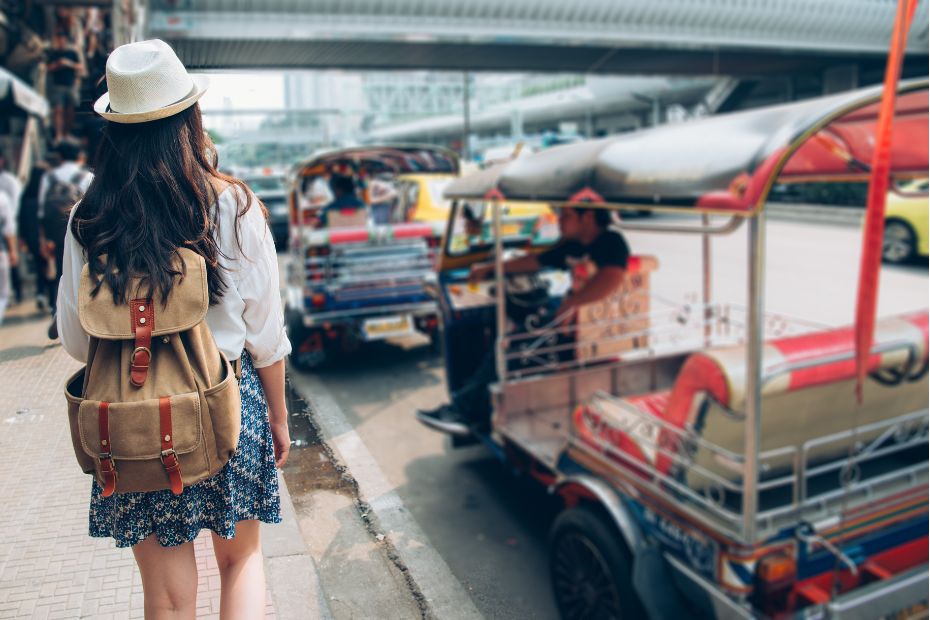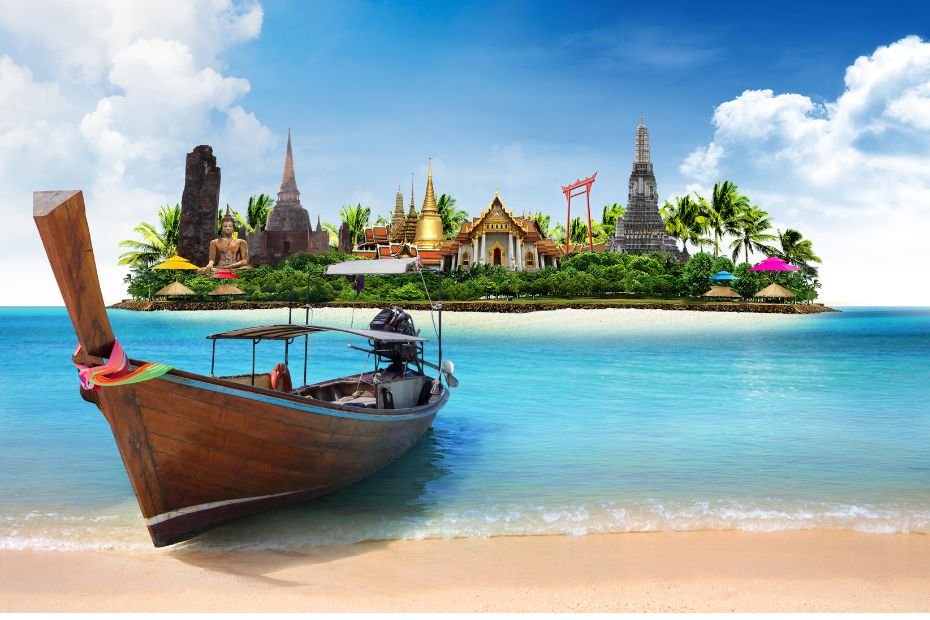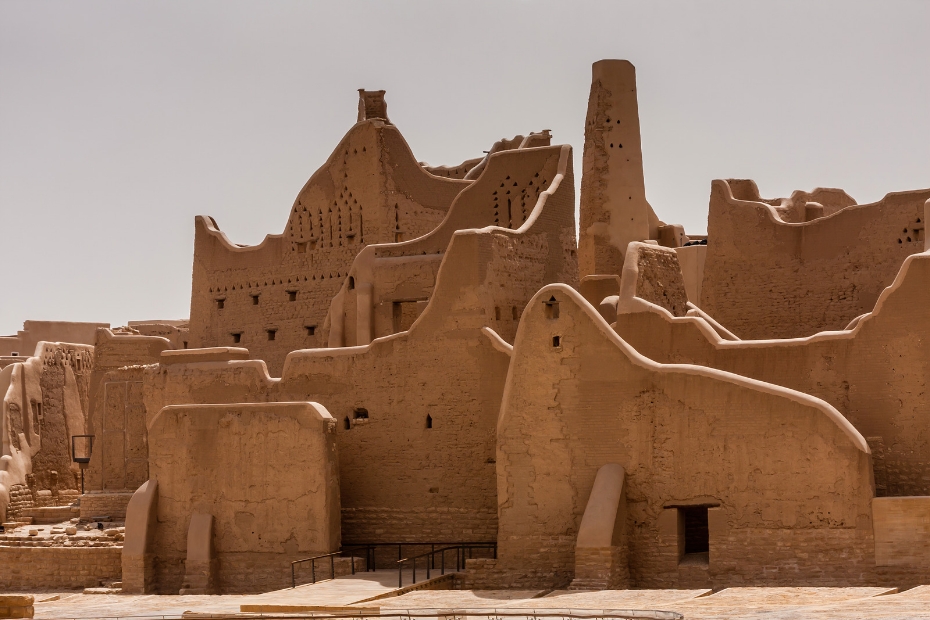Discover how to explore Thailand on a budget with our top tips on affordable accommodation, food, activities, and transportation for an unforgettable experience.
Welcome to our comprehensive guide on budget travel in Thailand, the beautiful Land of Smiles! As a popular tourist destination known for its rich culture, stunning landscapes, and delicious cuisine, Thailand offers an array of experiences for all travelers, including those on a tight budget. In this guide, we’ll share our top tips and insider knowledge on how to make the most of your Thailand adventure without breaking the bank. From affordable accommodations and local food options to cost-effective transportation and free activities, we’ll help you navigate the ins and outs of budget travel in Thailand, ensuring a memorable and wallet-friendly experience.
1. Budget Accommodation in Thailand
Staying in budget-friendly accommodations is essential for cost-conscious travelers. In Thailand, there are numerous options like guesthouses, hostels, and dormitory-style rooms catering to budget travelers. These accommodations can be found in most tourist areas, with prices ranging from $5-$15 per night.
For example, in Bangkok, consider staying at “Lub d Bangkok Silom,” a popular hostel offering dorm rooms for around $10 per night. In Chiang Mai, “Hug Hostel” is a great option, with dorm beds for about $5 per night. On the island of Koh Phangan, “Shiralea Backpackers Resort” is a well-known budget-friendly resort where you can find dorm beds for around $6 per night.
Using websites like Booking.com, Agoda, and Airbnb can help you find the best deals on accommodations. Make sure to read reviews from other travelers and pay attention to ratings to ensure a comfortable stay. Booking in advance, especially during high season, can secure lower rates and better availability. Additionally, consider staying in areas slightly removed from popular tourist spots, as accommodations in these locations may be cheaper and provide a more authentic experience.
2. Budget Transportation in Thailand
Efficient use of transportation can significantly impact your travel budget in Thailand. Public transport like buses, trains, and ferries is affordable and widely available. For instance, using the BTS Skytrain or MRT subway system in Bangkok can save you money compared to taxis or tuk-tuks. A one-day unlimited pass for the BTS costs about 140 THB ($4.50).
For traveling between cities, consider taking overnight sleeper trains or buses to save on accommodation costs. For example, a second-class sleeper train ticket from Bangkok to Chiang Mai costs around 800 THB ($25), and an overnight bus ticket on a similar route is approximately 600 THB ($19). These options provide a comfortable journey and allow you to save money by combining transportation and lodging.
When using public transportation, opt for the least expensive class or type of service, as these are generally still comfortable and reliable. Booking your tickets in advance, especially for trains and ferries, can help you secure lower prices and better availability. Using websites like 12Go Asia or Thai Railway Ticket can simplify the booking process and allow you to compare prices across different modes of transportation.

3. Thai Street food
Thai street food is renowned for its delicious flavors and affordability. Meals from street vendors or local markets often cost between $1-$3, making them a budget-friendly option for travelers. For example, in Bangkok, you can visit the famous Yaowarat Road in Chinatown to taste various dishes, such as Pad Thai, which costs around 50 THB ($1.60) per plate.
Another great place to sample street food is local markets, like the Chatuchak Weekend Market in Bangkok or the Warorot Market in Chiang Mai. These markets offer a wide variety of dishes at affordable prices. A bowl of Khao Soi, a Northern Thai curry noodle soup, typically costs around 40 THB ($1.30) at these markets.
Street food stalls are also an excellent opportunity to try regional specialties. For instance, when in Chiang Mai, take the chance to taste Sai Oua (Northern Thai sausage), or in Phuket, savor the local Mee Hokkien noodles. Try different dishes to experience authentic Thai cuisine while sticking to your budget.
4. Thailand Sightseeing
Many temples, parks, and cultural sites in Thailand have minimal entrance fees, making them ideal for budget travelers. In Bangkok, visit the iconic Wat Pho, home to the famous Reclining Buddha, for an entrance fee of only 200 THB ($6.40). Additionally, you can explore Lumphini Park, a vast green oasis in the city center, free of charge.
In Chiang Mai, visit the historic Wat Chedi Luang, where you only need to pay a 40 THB ($1.30) entrance fee. You can also explore the city’s old town, filled with temples and historical sites, at no cost. For nature lovers, the picturesque Huay Tung Tao Lake, located just outside Chiang Mai, offers a serene environment for relaxation and only charges a nominal 50 THB ($1.60) entrance fee.
For popular tourist destinations like national parks, consider visiting during the off-peak season to take advantage of reduced entrance fees. For instance, the entrance fee to Khao Sok National Park is typically 300 THB ($9.60) for foreigners during the high season, but you may find lower fees during off-peak months. Additionally, you can save money by exploring lesser-known parks, such as Erawan National Park, which has an entrance fee of 200 THB ($6.40) and features stunning waterfalls and trails.
5. Activities in Thailand
Free or low-cost activities are a great way to experience Thailand on a budget. Hiking is a popular and inexpensive activity that allows you to explore the country’s natural beauty. In Northern Thailand, you can hike the Doi Inthanon National Park trails, which offer stunning views and a chance to visit the highest peak in Thailand. The entrance fee is 300 THB ($9.60) for foreigners.
Visiting local markets is another budget-friendly activity, providing an authentic glimpse into Thai culture and the opportunity to purchase affordable souvenirs. Explore the bustling Chatuchak Weekend Market in Bangkok, or visit the vibrant Sunday Walking Street Market in Chiang Mai.
Some temples also offer free meditation or yoga classes for visitors. Wat Mahathat in Bangkok is a well-known temple that provides free daily meditation sessions and occasionally hosts meditation retreats. In Chiang Mai, visit the Yoga Tree studio, which offers donation-based community yoga classes suitable for all levels.
6. Bargaining in Thailand
Haggling is common in Thailand, especially at markets and street stalls. This skill can help you save money on souvenirs, clothing, and other items. To successfully negotiate, start by offering a price lower than you’re willing to pay, but ensure it’s still reasonable. The vendor will likely counter with a higher price, and you can continue negotiating until you reach a mutually agreeable amount.
Remember that being polite and respectful during the bargaining process is crucial. Smiling and maintaining a friendly demeanor can go a long way in securing a good deal. Additionally, be prepared to walk away if you feel the price is too high, which can sometimes prompt the vendor to offer a better deal.
For example, if you’re shopping for a traditional Thai silk scarf at a market, the initial asking price may be 500 THB ($16). You could counter with an offer of 250 THB ($8), eventually settling on a final cost of around 300-350 THB ($9.60-$11.20).
7. Travel Insurance for Thai Trip
Purchasing travel insurance may seem counterintuitive for budget travelers; however, it can save you money in the long run by providing coverage for unexpected medical expenses, trip cancellations, and lost luggage. Choosing a comprehensive policy that meets your specific needs can protect your investment in your trip and provide peace of mind.
Various websites, such as World Nomads, InsureMyTrip, and Squaremouth, allow you to compare travel insurance policies and prices from different providers. When selecting a policy, consider factors like the duration of your trip, your destination, and the activities you plan to participate in. Ensure the policy covers medical emergencies, trip interruptions or cancellations, and personal belongings.
For example, a two-week travel insurance policy for a trip to Thailand could cost around $80-$150, depending on the level of coverage and the provider. While this may seem like an added expense, the potential financial risk of not having insurance can be much more significant, especially in a medical emergency or unforeseen circumstances requiring trip cancellation.
8. Network Connectivity in Thailand
Staying connected while traveling in Thailand can be affordable if you choose suitable options. Instead of using international roaming, which can be expensive, purchase a local SIM card for your phone. Local SIM cards are widely available at airports, convenience stores, and mobile phone shops.
Thai mobile providers such as AIS, dtac, and TrueMove H offer prepaid SIM cards with various data packages and calling options. For example, AIS provides a “Traveller SIM” with 15 days of unlimited data and 100 THB ($3.20) of calling credit for 299 THB ($9.60). This option allows you to stay connected at a fraction of the cost compared to international roaming.
To purchase a local SIM card, ensure your phone is unlocked and compatible with Thai networks. You must also provide your passport for registration, as Thai law requires. Once you have your local SIM card, you can easily top-up your credit or extend your data package at convenience stores or online.
9. Travel Timing to Thailand
Traveling during the low season (usually between May and October) can help you find cheaper flights, accommodations, and fewer crowds at popular attractions. The low season in Thailand typically coincides with the rainy season, but the weather can still be pleasant, with short bursts of rain rather than continuous downpours.
To find the best flight deals, use websites like Skyscanner, Google Flights, or Kayak to compare prices across multiple airlines. Being flexible with travel dates and booking well in advance can increase your chances of securing a low-priced ticket. For example, a one-way flight from New York to Bangkok could cost around $400-$600 during the low season, compared to $700-$1000 during the high season.
Similarly, accommodation prices are generally lower during the low season, making it easier to find budget-friendly options. You can also take advantage of off-peak discounts and promotions for attractions and activities.
10. Plan the Thai Trip
Researching and creating a rough itinerary before your trip can help you prioritize what’s important and ensure you get all the must-see attractions and experiences. Planning allows you to maximize your time and budget in Thailand.
Research your destination, including its main attractions, local customs, and transportation options. Websites like Lonely Planet, Tripadvisor, and travel blogs can provide valuable insights and recommendations. Additionally, consider using travel apps like Maps.me, XE Currency, and Google Translate to help you navigate and communicate while in Thailand.
Create a daily itinerary with your desired activities, sightseeing, and meal options. This will help you gauge the costs and time involved in each activity, allowing you to budget more effectively. Remember that it’s important to balance planning and flexibility – leave room in your itinerary for spontaneous adventures and last minute deals that may arise.
For instance, allocate a specific amount for daily expenses, such as food, transportation, and sightseeing. A daily budget can help you make informed decisions about your spending without feeling restricted.
Additionally, consider booking accommodations and transportation in advance, especially during the high season or for popular destinations. This can help you secure better prices and availability and reduce the stress of finding last-minute options.
11. Travel Safety in Thailand
Ensuring your safety while traveling in Thailand is crucial and can help you avoid unnecessary expenses related to accidents or theft. Taking simple precautions can significantly reduce risk and ensure a more enjoyable trip.
Keep your belongings secure, especially in crowded areas or on public transportation, where pickpocketing can occur. Use a money belt or hidden pouch to store your passport, money, and essential documents, and avoid displaying expensive items like cameras or smartphones openly.
When participating in outdoor activities, follow safety guidelines and use the appropriate gear. For example, if you rent a motorbike, always wear a helmet and have a valid driver’s license. Motorbike accidents are common in Thailand, resulting in severe injuries and expensive medical bills.
Be aware of common scams targeting tourists, such as fake gem sales, rigged taxi meters, or overpriced tuk-tuk rides. Do your research beforehand to familiarize yourself with these scams and know how to avoid them.
Finally, respect local customs and laws to avoid fines or legal trouble. For instance, dress modestly when visiting temples and refrain from touching anyone’s head or pointing your feet at someone, as these actions are considered disrespectful in Thai culture.
Following these guidelines and using common sense, you can enjoy a safe, budget-friendly trip to Thailand that offers unforgettable experiences and memories.
12. Local Currency
Familiarizing yourself with the local currency and exchange rates can help you manage your budget more effectively in Thailand. The Thai Baht (THB) is the official currency, and knowing the approximate conversion rate to your home currency is essential for making informed spending decisions.
When exchanging money, it’s best to avoid airport currency exchange booths or tourist areas, as they often charge higher fees or offer less favorable exchange rates. Instead, look for reputable exchange offices or banks, such as Superrich, Kasikorn Bank, or Siam Commercial Bank, which generally provide better rates.
Using debit or credit cards with no foreign transaction fees can save you money on currency conversion fees. However, some establishments may charge an additional fee for card payments, typically around 3% of the transaction amount. Additionally, using ATMs in Thailand often incurs a local withdrawal fee of around 220 THB ($7) per transaction, so it’s advisable to withdraw more significant amounts at once to minimize these fees.
Budgeting apps like Trail Wallet or Spendee can help you track your daily expenses and spending habits, ensuring you stay within your budget while traveling in Thailand.
13. Thai Language
Learning some basic Thai phrases can help you navigate the country more quickly and even save money by allowing you to communicate with locals, negotiate prices, and ask for recommendations. Although English is widely spoken in tourist areas, having a basic understanding of the Thai language can enhance your travel experience and help you connect with locals on a deeper level.
Some useful phrases to know include:
- Hello: Sawasdee (krub/kah) – “krub” is used by men, while “kah” is used by women
- Thank you: Khop Khun (krub/kah)
- How much?: Tao rai?
- Can you give a discount?: Lot dai mai?
A language app like Duolingo or Drops can help you learn basic Thai vocabulary and phrases before your trip. While in Thailand, consider attending a language exchange event or participating in a language course to practice your skills.
Having a translation app like Google Translate installed on your phone can also be helpful in situations where language barriers arise. The app’s camera feature lets you translate written text, such as menus or signs, in real-time.
By learning and using Thai during your trip, you can gain a deeper understanding of the local culture, save money, and create a more memorable travel experience.
14. Thai Souvenirs
Purchasing souvenirs is a standard part of traveling, but it can also add to your expenses. To stay within your budget, choose affordable yet unique items representing Thai culture and craftsmanship. Local markets and street stalls are excellent places to find budget-friendly souvenirs, as they often offer lower prices than shopping centers or touristy shops.
Some inexpensive souvenir ideas include:
- Thai silk scarves: These colorful and elegant scarves make excellent gifts and can be found for as low as 150-300 THB ($5-$10).
- Handmade soaps: Available in various shapes and scents, these can be purchased for around 30-50 THB ($1-$1.50) each.
- Elephant pants: These comfortable and lightweight pants are popular among tourists and can be found for 100-200 THB ($3-$6) per pair.
Remember to bargain when shopping for souvenirs, as it is a common practice in Thailand, and can help you secure better deals. However, always be respectful and maintain a friendly demeanor during the bargaining process.
15. Volunteering in Thailand
Volunteering during your trip to Thailand can be a rewarding way to give back to the local community while saving money on accommodation and food. Many organizations and projects offer free or low-cost lodging and meals in exchange for your time and skills.
For example, you can volunteer at an organic farm through the WWOOF (World Wide Opportunities on Organic Farms) network, where you will work for a few hours a day in exchange for food and accommodation. Similarly, participating in community-based tourism projects, such as the Ban Talae Nok Village Homestay in Southern Thailand, allows you to experience authentic local life while contributing to sustainable development.
Always research the organization and project you’re interested in to ensure that it is reputable and ethical. Websites like Workaway, HelpX, and Grassroots Volunteering can help you find volunteering opportunities across Thailand that match your interests and skills.
Volunteering allows you to save money on travel expenses and provides you with a unique and immersive cultural experience. Dedicating a portion of your trip to helping others can create lasting memories and foster meaningful connections with the local community.
16. Carry a Reusable Water Bottle
Drinking tap water in Thailand is not generally considered safe for consumption due to potential contamination. Drinking only bottled or adequately treated water while traveling in the country is essential to stay healthy and avoiding potential medical expenses.
Instead of continuously purchasing single-use plastic water bottles, which can add up the cost and create environmental waste, consider investing in a reusable water bottle with a built-in filter, such as the LifeStraw Go or GRAYL Ultralight Purifier. These bottles remove bacteria, viruses, and other contaminants, allowing you to safely drink tap water or refill it from other sources like rivers and streams.
Another option is to use water purification tablets or a portable UV water cleaner, such as SteriPEN, to treat tap water before drinking. Many hotels and hostels also provide free or low-cost drinking water stations where you can refill your water bottle.
By taking precautions and using appropriate water purification methods, you can ensure that you stay healthy and hydrated throughout your budget-friendly trip to Thailand while minimizing your environmental impact.
17. Exploring Lesser-Known Destinations in Thailand
Stepping off the beaten path and exploring lesser-known destinations in Thailand can save you money and provide unique and authentic experiences away from tourist crowds. Smaller towns and villages often offer cheaper accommodation, food, and activities than popular tourist hotspots.
Some lesser-known destinations to consider include:
- Nan: Located in Northern Thailand, Nan is known for its picturesque landscapes, ancient temples, and traditional Thai architecture. It offers a peaceful escape from the hustle and bustle of more popular cities like Chiang Mai and Chiang Rai.
- Trang: A southern province with stunning beaches, lush rainforests, and charming fishing villages, Trang is an excellent alternative to the more crowded and expensive islands like Phuket or Koh Samui.
- Loei: Nestled in the northeast region of Thailand, Loei boasts impressive national parks, unique local culture, and a cooler climate due to its high elevation.
By visiting lesser-known destinations, you can support local communities and gain a deeper understanding of Thai culture and history. You can often find budget-friendly accommodations and activities, allowing you to stretch your travel budget further.
Bonus Tip: Participating in Free Activities in Thailand
Thailand offers numerous free or low-cost activities that enrich your travel experience without breaking the bank. From exploring national parks to visiting temples and attending cultural events, budget-conscious travelers have plenty of options.
Some free activities to consider include:
- Temple hopping: Many of Thailand’s beautiful temples, such as Wat Pho in Bangkok or Wat Phra That Doi Suthep in Chiang Mai, are free or have minimal entrance fees (typically around 50-100 THB or $1.60-$3.20).
- National parks: Some national parks, like Erawan National Park in Kanchanaburi or Khao Yai National Park near Bangkok, offer free or low-cost entry (usually around 200-400 THB or $6.40-$12.80), allowing you to hike, swim, or enjoy the stunning natural scenery.
- Cultural events: Attend traditional festivals and cultural events, such as Songkran (Thai New Year) or Loi Krathong, which offer a unique insight into Thai culture and customs at little to no cost.
Participating in these free or low-cost activities can create unforgettable memories and gain a deeper appreciation for Thai culture while staying within your budget. This will help you make the most of your Thailand trip without overspending or sacrificing the quality of your experience.
As you can see, traveling in Thailand on a budget is entirely possible with research, planning, and flexibility. By following our tips and recommendations, you can save money while still enjoying the best this enchanting country offers. Whether you’re backpacking solo, traveling with friends, or exploring as a family, there are countless ways to experience Thailand’s incredible culture, mouthwatering cuisine, and breathtaking natural beauty without overspending. So pack your bags, grab your passport, and embark on a budget-friendly adventure in Thailand, creating unforgettable memories and immersing yourself in the Land of Smiles.



